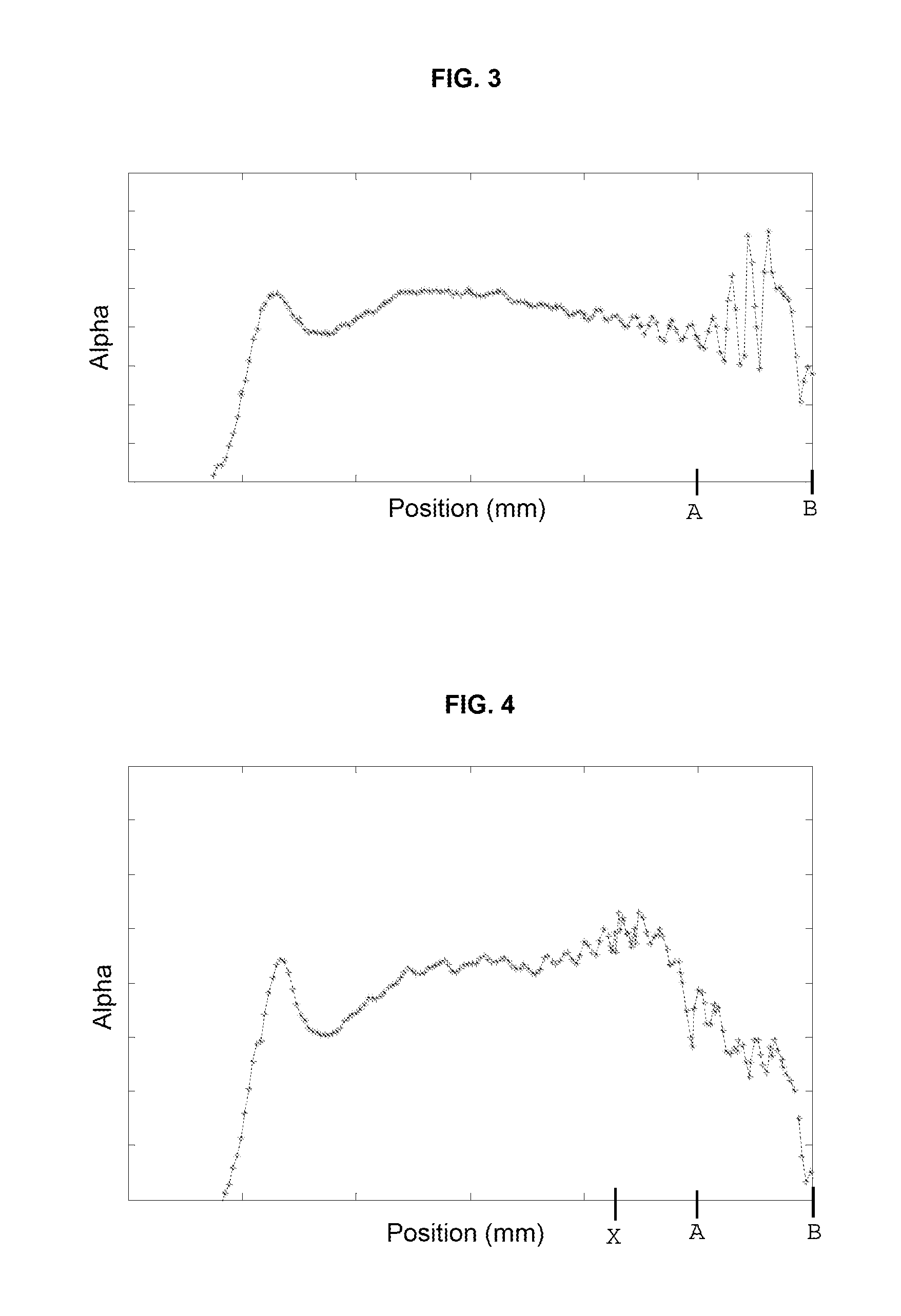PCVD Method and Apparatus
- Summary
- Abstract
- Description
- Claims
- Application Information
AI Technical Summary
Benefits of technology
Problems solved by technology
Method used
Image
Examples
example 1
[0119]Another PCVD process was carried out in a PCVD apparatus described in Comparative Example 1 (above), except that one 750-millisecond pulse of oxygen was provided to correspond to an longitudinal position of 1240 millimeters along the substrate tube (referenced by X in FIGS. 2 and 4). The orifice through which the oxygen flowed had an orifice No. 28 (Kv parameter value of 0.011 m3n / hour). The gas pressure was 1.5 bar. The resulting substrate tube was subjected to a contraction process so as to obtain a solid rod (i.e., a primary preform) in the same manner as Comparative Example 1.
[0120]FIG. 2 depicts cross-sectional area (CSA), and FIG. 4 depicts alpha value for the solid rod's core as a function of length (i.e., longitudinal position). FIGS. 2 and 4 illustrate effects of the present invention. For instance, FIG. 4 shows substantially reduced alpha-value variation over length of the glass rod as compared to the extreme alpha oscillations shown in FIG. 3 (i.e., between position...
example 2
[0121]Another PCVD process was carried out in a PCVD apparatus described in Comparative Example 1 (above), except that five 50-millisecond pulses of 5 percent Freon and 95 percent oxygen were provided to correspond to longitudinal positions of 1240 millimeters and repeated at 1140 millimeters, 1020 millimeters, 900 millimeters, 780 millimeters, and 660 millimeters, respectively, along the substrate tube. These longitudinal positions are referenced by asterisks (*) in FIG. 5.
[0122]The orifice through which the plasma-reactive gas flowed had an orifice No. 28 (Kv parameter value of 0.011 m3n / hour). The gas pressure was 1.8 bar. The resulting substrate tube was subjected to a contraction process so as to obtain a solid rod (i.e., a primary preform) in the same manner as Comparative Example 1.
[0123]To supplement the present disclosure, this application incorporates entirely by reference the following commonly assigned patents, patent application publications, and patent applications: U....
PUM
| Property | Measurement | Unit |
|---|---|---|
| Time | aaaaa | aaaaa |
| Time | aaaaa | aaaaa |
| Time | aaaaa | aaaaa |
Abstract
Description
Claims
Application Information
 Login to View More
Login to View More - R&D
- Intellectual Property
- Life Sciences
- Materials
- Tech Scout
- Unparalleled Data Quality
- Higher Quality Content
- 60% Fewer Hallucinations
Browse by: Latest US Patents, China's latest patents, Technical Efficacy Thesaurus, Application Domain, Technology Topic, Popular Technical Reports.
© 2025 PatSnap. All rights reserved.Legal|Privacy policy|Modern Slavery Act Transparency Statement|Sitemap|About US| Contact US: help@patsnap.com



